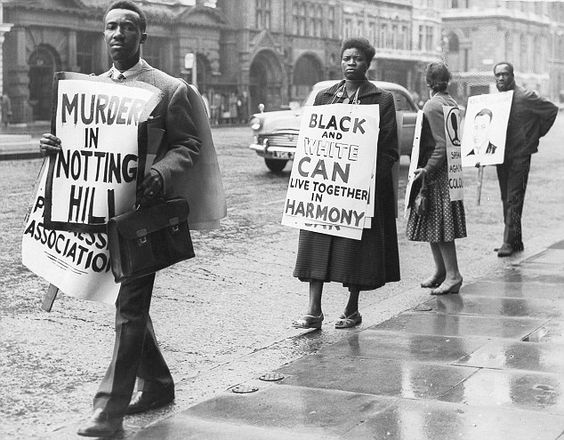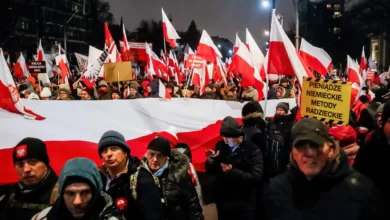The truth about this unsolved murder is finally coming to light. Here’s what it reveals about racism in Britain

By Mark Olden, The Guardian.
Kelso Cochrane was stabbed to death in 1959. After 65 years, newly released files show the Met has questions to answer.
At roughly midnight on 17 May 1959, Kelso Cochrane, a 32-year-old carpenter from Antigua, was ambushed by a group of white youths on a derelict street corner of Notting Hill in London. He was walking home from hospital after getting his broken thumb treated, and one of the attackers stabbed him in the heart. The next day, antiracism campaigners wrote to the prime minister, Harold Macmillan, comparing his murder to the lynchings then taking place in the American deep south. But the police had already decided that racism was not the motive for the crime – just as they initially did more than three decades later, when the black teenager Stephen Lawrence was murdered in strikingly similar circumstances.
In 2012, when two men were finally convicted of Lawrence’s murder after a long and tireless campaign by his parents, he received a measure of justice. Cochrane never did. His murder remains unsolved 65 years on. After a protracted effort by members of Cochrane’s surviving family and their lawyers, the Metropolitan police agreed that the National Archives could release files the family hoped would answer their questions. The files – which were due to be opened in 2054 – leave little doubt that Cochrane’s murder was indeed a lynching, as antiracism campaigners claimed at the time. They also raise questions about the police’s efforts to bring the perpetrators to justice in the decades since then.
Cochrane arrived in England in 1954. He was one of the Windrush generation, and by 1959 he had a new relationship and was popular among London’s Antiguan community. Notting Hill, where he lived, was one of the few places where black Londoners could find accommodation. The area seethed with racial tensions; the previous August, race riots had erupted there. Oswald Mosley had set up offices in Notting Hill, and announced his candidacy for the constituency in the 1959 general election. A few weeks after Cochrane’s murder, Mosley held a public rally on the spot where Cochrane was stabbed, and urged the crowd “to fight the coloured invasion”.
Two questions have long loomed over the case: who killed Cochrane, and why were they never charged? The newly released files reveal the police were convinced they knew who two members of the group of white youths were. Patrick Digby and John Breagan were attending an all-night drinking party nearby, and “were strongly suspected of having committed the murder, but despite exhaustive inquiries and interrogation, it was not possible to prefer a charge against them,” according to a series of police statements. Under interrogation, both admitted to being at the murder scene at the time.
Breagan had been freed from prison 10 days before Cochrane was killed, for carrying out unprovoked knife attacks on three black men in 1957. When he was arrested for these offences, the files reveal that he swore to two police officers that if he went to jail, he would kill the first black person he saw when he got out.
After I began investigating the case in 2005, I learned that the killer’s identity was “the worst kept secret in Notting Hill”. Three people identified Digby to me as the man who struck the fatal blow. Two of them had been questioned by the police about the murder; the third was Digby’s stepdaughter, Susie Read. Breagan, who insisted he was innocent, told me that when the police detained him, he was placed in a cell next to Digby, where he was able to iron out a discrepancy in their stories – after which the police released them both.
Digby lived for 48 years after Cochrane was murdered; Breagan lived for another 60. Given the damning material in the police files, what effort was made to bring them to justice? Little, it seems. Breagan, for one, told me he was never questioned again about the case after 1959. The police’s only other attempt to reignite their investigation was in 2003, when Cochrane’s brother wrote to Scotland Yard asking for it be reopened. The Met conducted a review, but after six months it concluded that “regrettably there was insufficient evidence for any realistic prospect of a conviction”. The last possible forensic link between killer and victim had been severed in May 1968, when the police sanctioned the destruction of Cochrane’s clothes.
Why did nobody come forward? Partly, there were fears of retribution among those who may have given evidence against Cochrane’s assailants. But it’s also clear that pessimism set into the police investigation in the weeks after the crime. This wasn’t helped by the police’s decision to leak damaging, false and embellished information about Cochrane that appeared in the press seven days after he was murdered – including the suggestion that the knife that killed him was probably his own, and that he’d drawn it on the gang after they demanded money from him. “It was as if they thought no one was ever going to bother with Kelso, that Kelso had no family who were going to want to know what happened to him. But the family has been searching for answers since 1959,” said Millicent Christian, his cousin’s daughter.
With the support of dozens of Cochrane’s surviving relatives in Antigua, and Cochrane’s daughters in New York, Christian submitted a comprehensive freedom of information request that finally prised the files open. At first, their request was rebuffed, principally on the grounds that disclosing the files would jeopardise future criminal investigations. But after the Met police said these grounds no longer applied, the National Archives opened the files. The natural conclusion is that the individuals the Met believe were responsible for the crime are dead, and the case is closed.
Yet the Met insists that the case remains unsolved and any evidence that comes to light will be assessed and investigated accordingly – a position the family’s lawyer, Daniel Machover, says is “entirely unreasonable”, given that the main suspects are dead, the Met has destroyed the case’s physical evidence, and the files have only been opened because any chance of a prosecution has vanished. Machover also pointed out that since key evidence in the files was missing at the point the National Archives took charge of them, including ID photos of the suspects, as well as Cochrane’s clothes, it was highly unlikely any charges would ever be brought.
The bigger question is whether there was ever really the will to convict Cochrane’s killers following the Met’s initial investigation. Fifty years on, one of those questioned about the murder in 1959, who knew the main suspects well, had no doubt the police were reluctant to pursue the case further, especially since those guilty could have faced the death penalty. He told me: “Well, it doesn’t take much working it out, does it? A bloke’s dead. A black bloke’s lying dead. What the police were doing, nobody knows. ‘Cos he was a black bloke, a black person: ‘What you want to worry about him for? Just let it lie.’”





